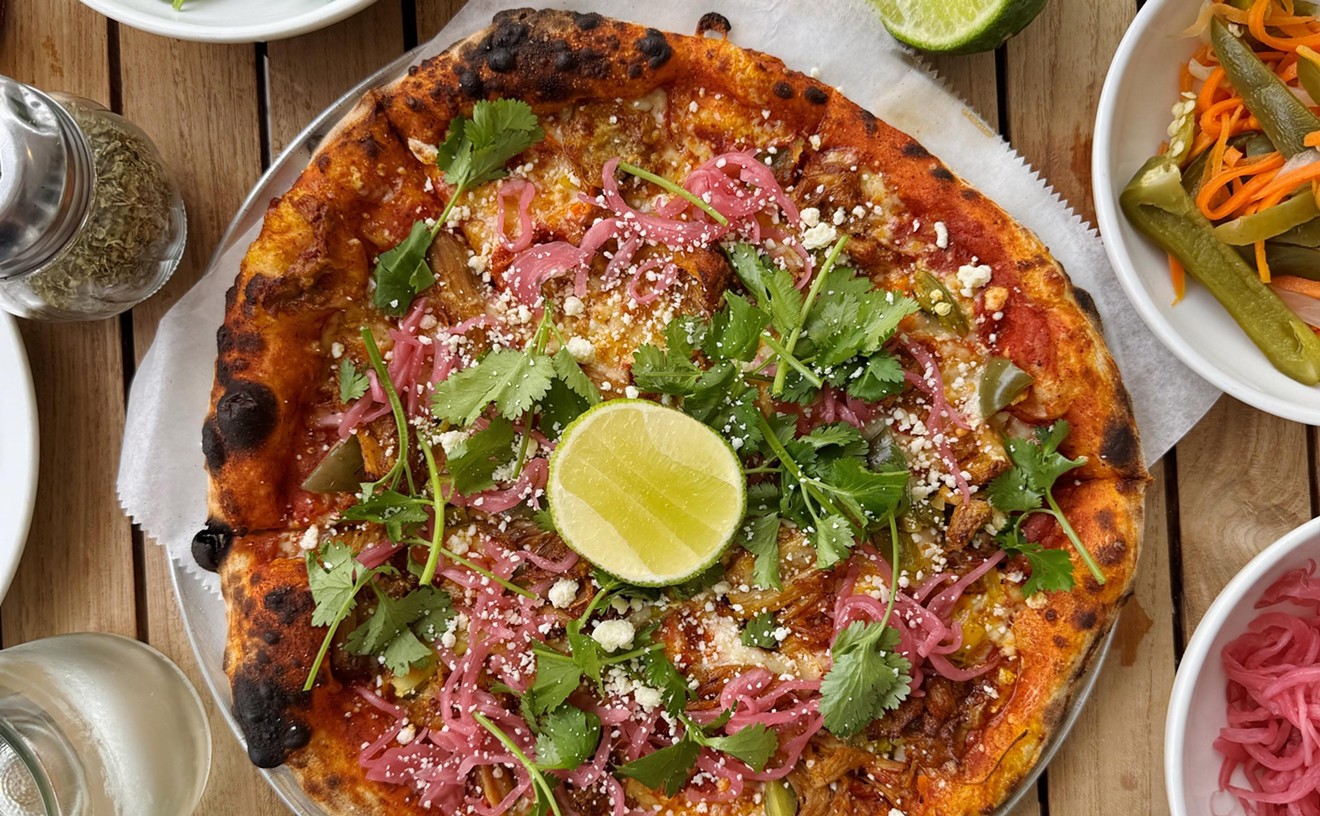It's happened to me, and I'm sure it's happened to a lot of people," Momofuku chef David Chang once said while discussing the importance of value. "You go to a fancy restaurant, a place where you want to have a great meal, and you leave, and you spend several hundred dollars, and feel like you're ripped off a little bit."
That's sort of how I felt when exiting the Restaurant at the Setai. Not that there was any sticker shock: Since debuting in 2001, this has always been one of the city's most expensive establishments. It also has been one of the best, at least during the reign of chef Jonathan Wright — which ran from 2007 until this past fall. David Werly, who trained under the illustrious Alain Ducasse, replaced Wright in October. Werly arrived in Miami via Vegas, having served there as executive chef of Le Cirque at the Bellagio. Those unconcerned with cash will be pleased to hear that Werly has maintained the Setai's lofty caliber of cuisine. Those concerned with cash probably shouldn't be dining here to begin with.
You can't eat ambiance, but you sure can take it in. When the Setai's natural, earth-toned, Zen-trified design was unveiled, it was seen as a sophisticated antidote to the white and whimsical South Beach restaurant décor of the day. It remains a singularly handsome place to dine. The main room soars with glazed brick walls and a counter that snakes around the entire space. Best seats in the house might be at tables that jut out from this bar, for behind it is a series of kitchen stations — grill, tandoori, wok, and so forth, where a team of Asian cooks orchestrates the meals. More conventional dining is available in rooms that spin off to the side. If the weather is welcoming, ask for outdoor seats in the sultry and meditative gardens, where plush pods are positioned along ponds, fronds, and lily pads.
Menu items are culled from the cuisines of China, Thailand, Singapore, India, Indonesia, and Malaysia. Each is served family-style on indigenous plateware (nan bread in a vessel that must have weighed ten pounds; rice in a seemingly weightless wood bowl). Dishes are not categorized by geographical region, but divvied into soups, dim sum, a couple of caviar selections, and "appetizers East and West." That's to start. Entrées are sectioned into tandoori, curries, wok items, seafoods, and meats. Peking duck (half $35, whole $70) is a category unto itself.
We started one meal with Peking duck salad: lush pink slices of breast mixed with fresh field greens and a mild hoisin vinaigrette. A few lychee pieces, pine nuts, and scallions were tossed in to tasty effect, but the portion seemed penny pinching for $20.
Two circles of nan — one plain, the other lightly brushed with garlic and cilantro — were brought to the table with the salad. An assertively seasoned lentil dal came alongside. If the bread were complimentary, as opposed to $8 an order, I probably wouldn't even quibble that it wasn't steamy in a hot-from-the-tandoor way.
It is only fair to note that wide price differentials within each menu grouping allow diners to indulge either moderately or extravagantly. Among the meats, an order of pork belly is $24, while Wagyu beef is $65. Seafoods range from a $32 salmon to a $48 snapper. Nasi goreng is $22; Singapore crab noodles from the same wok station are $58. A quartet of puffy white barbecued pork buns is $12; the same number of teeny, ethereally light scallop-truffle dumplings are $24.
The buns were just like traditional ones found in NYC's Chinatown, except smaller and with a more pristine mix of pork inside; a dish of orange-accented, sweet/spicy chili dip did wonders for the doughy exteriors. The four fungi-flecked dumplings delighted in a less value-driven manner — the shellfish bathed in luscious truffle cream and encased in transparently thin white rice wraps.
A host of other dim sum dumplings, along with the aforementioned Peking duck and Singapore crab, reflect a strong Chinese menu presence. Cantonese-style beef hor fun was delicious — thick ribbons of rice noodles tangled with meltingly tender morsels of marinated skirt steak in a scallion-and-onion-studded brown sauce. Malaysian mee goreng, pad thai, and Indonesian nasi goreng are some of the other stops on the wok station. The last was an almost shockingly lackluster rendition, a one-bowl presentation of fried rice studded with tiny bits of chicken and topped with a fried chicken wing, a cube of battered and fried fish, a sunny-side-up egg, and two shrimp crackers. All was fresh and tasty enough, but this is the sort of dish that chefs can go to town on in terms of textures and visuals. This $26 version paled in comparison to that found at Bali Café.
Roast pork curry brought a bowl of thin, spicy red curry broth stocked with cubes of tenderloin, sugar snap peas, and fresh baby corn and palm hearts. Jasmine rice was served on the side in an open dish, steam and heat thus escaping on the journey from kitchen to table.
Chicken tikka proved a notch or three above what you'll find at local Indian joints: tender, juicy, skinless, and boneless thighs redolent of the tandoor grill and garam masala spices. A side of somewhat fiery mint sauce accompanied the blushing bird, along with a pair of spherical onion fritters. Dishes here are billed as family-style, generally meaning "to be shared" — which makes the serving of two little fritters for three people seem puzzling and parsimonious.
The expansive/expensive wine list overseen by sommelier Dwayne Savoie includes plenty of by-the-glass selections as well as half-bottles — the latter starting at $40. The Restaurant's website advertises a monthly collection of 65 wines, all discounted 40 percent, but no mention of such was made verbally or on the menu.
A high bar is set for high-end restaurants. Most of the cuisine here clears the elevated hurdle, but service and attention to detail come up short. The staff here works in a more professional manner than those at many Beach establishments, yet the young workers aren't long on experience. Tableside manners became clumsy at times, and there were minor miscues — from our linen tablecloth never being cleared of crumbs, to having to wait too long for entrée plates to be cleared.
Other details were missed. On one visit, we were brought predinner lentil wafers and shrimp crackers, an amuse-bouche, and a postdinner truffle; another time, we received none of the three. That's a big omission. Tablecloths in the room were wrinkled and laid crookedly, and our table wobbled whenever anything was placed on it — except for an absolutely weightless passion fruit soufflé (unfortunately, it wasn't wait-less; owing to confusion, perhaps language-related, the waiter forgot to place our order).
Tall as a top hat, the soufflé was steamy, foamy, mellifluous, and moist. At the bottom of the dish was a thin layer of chocolate; chocolate sauce was superfluously served alongside (we didn't use it), along with a dab of pure passion fruit sorbet. New pastry chef Carl Bertka also offers smaller desserts ($7 or $8), including a dreamily creamy, citrus-happy yuzu cheesecake with a scoop of sesame ice cream (more notable for being gray than for the muted flavor).
You can have a great meal at the Restaurant at the Setai. Finding great value is another matter.










